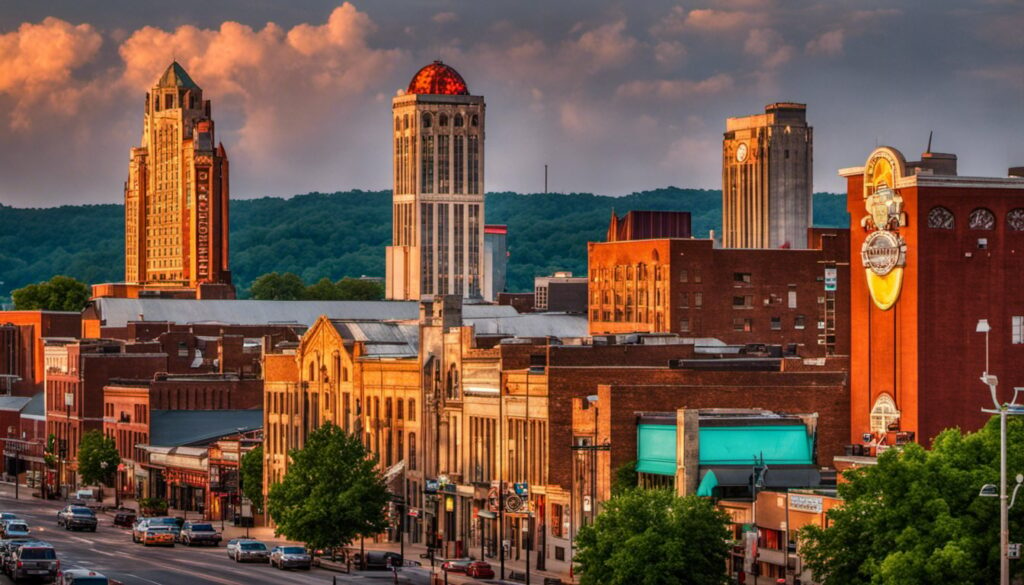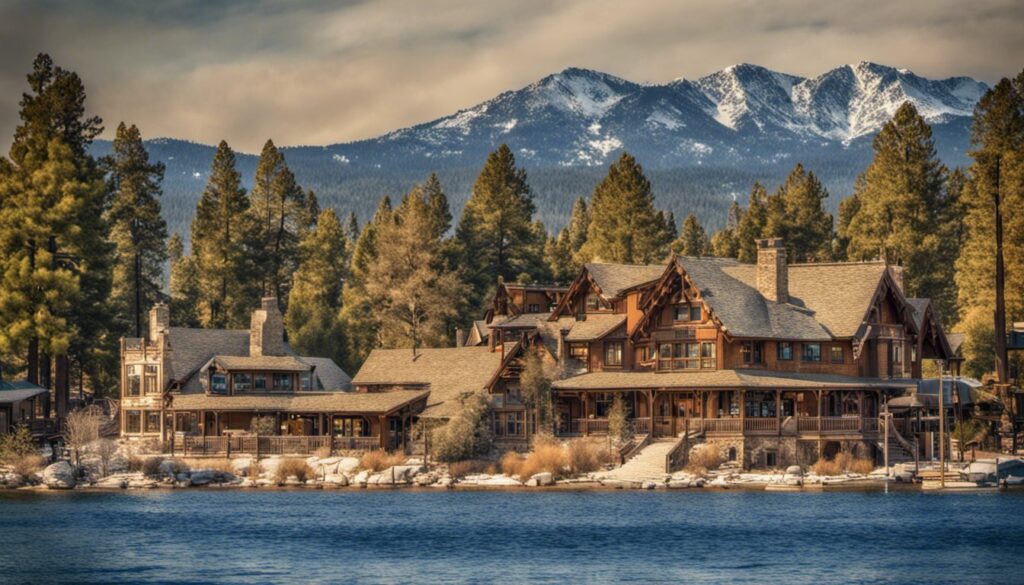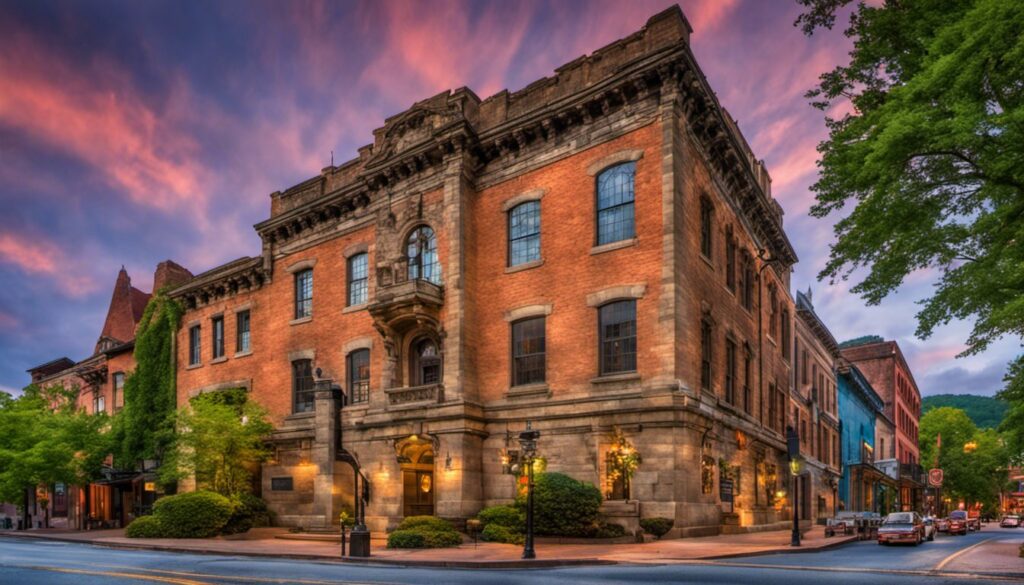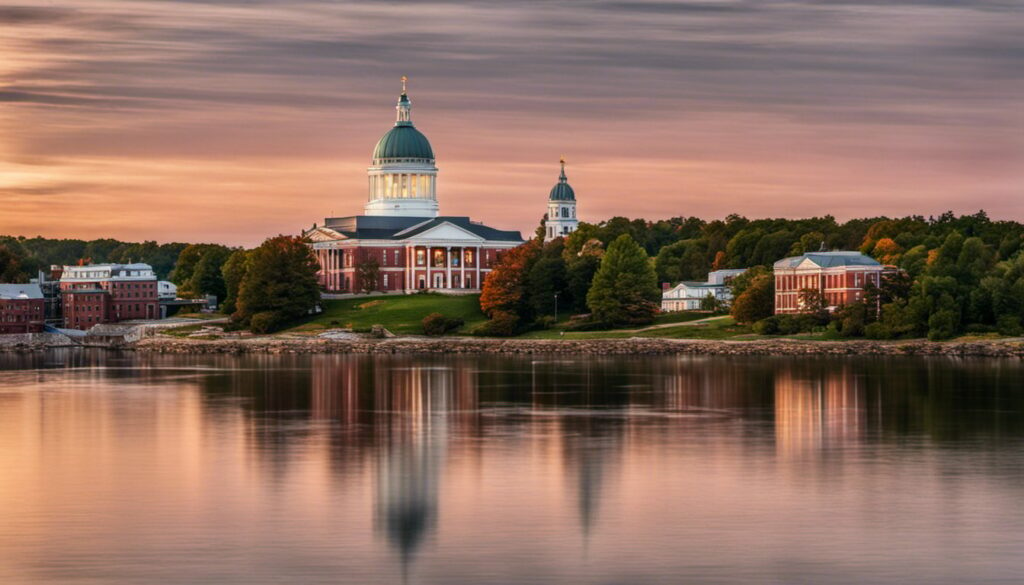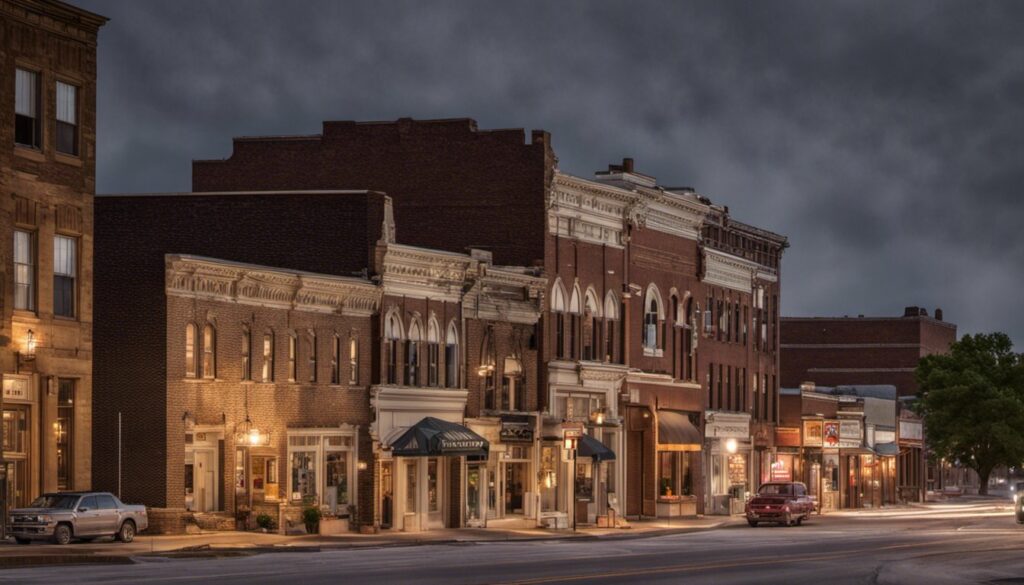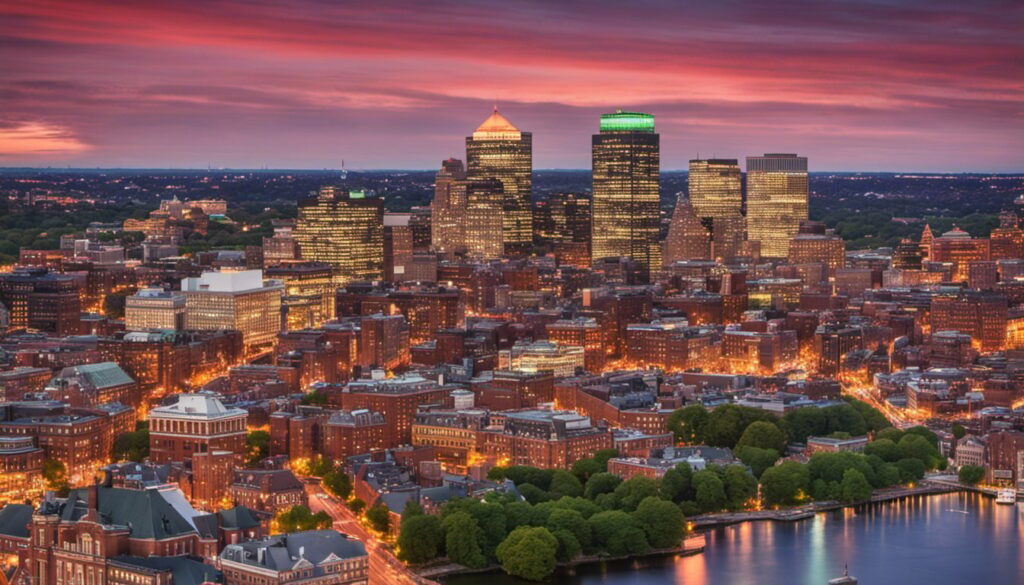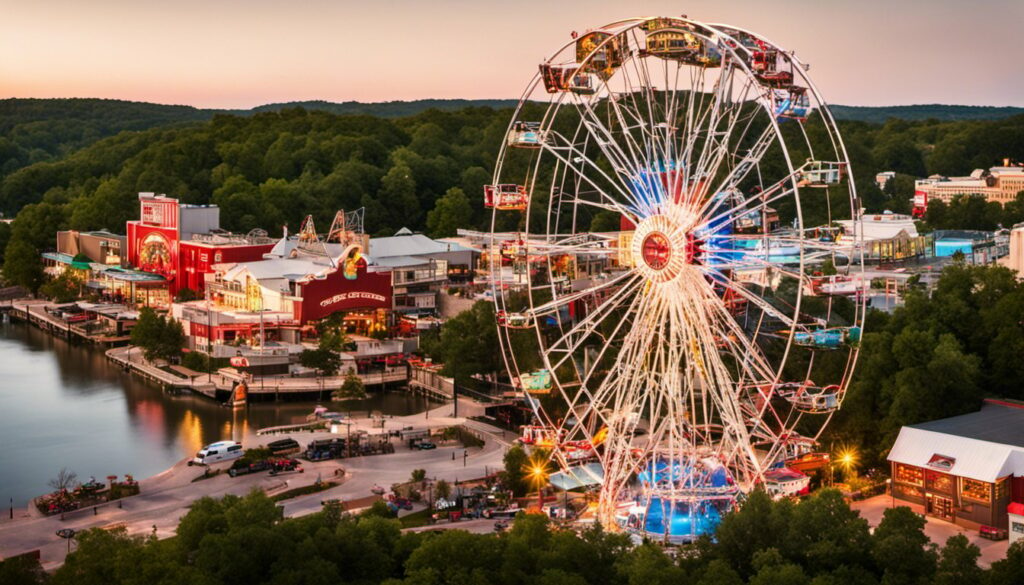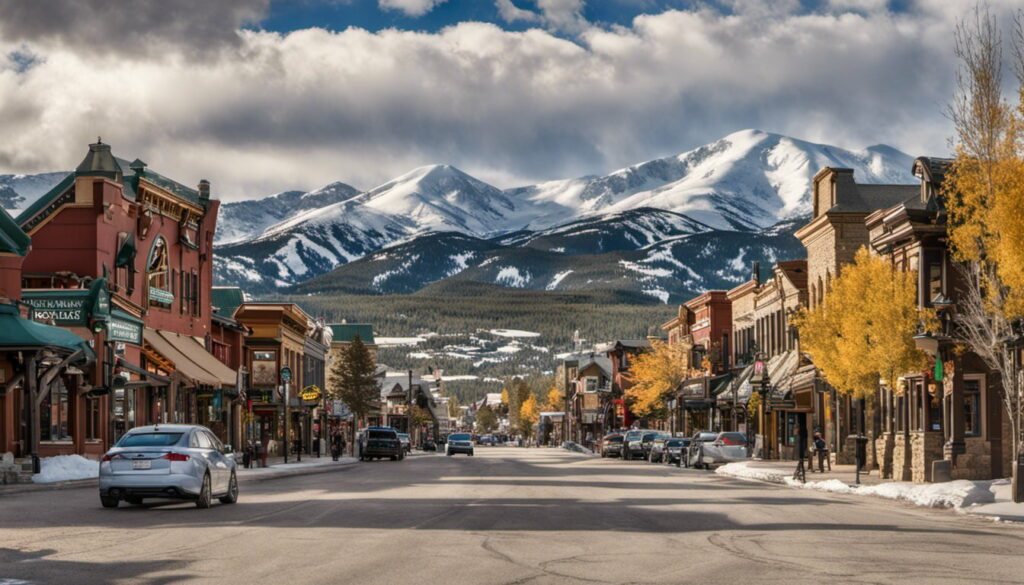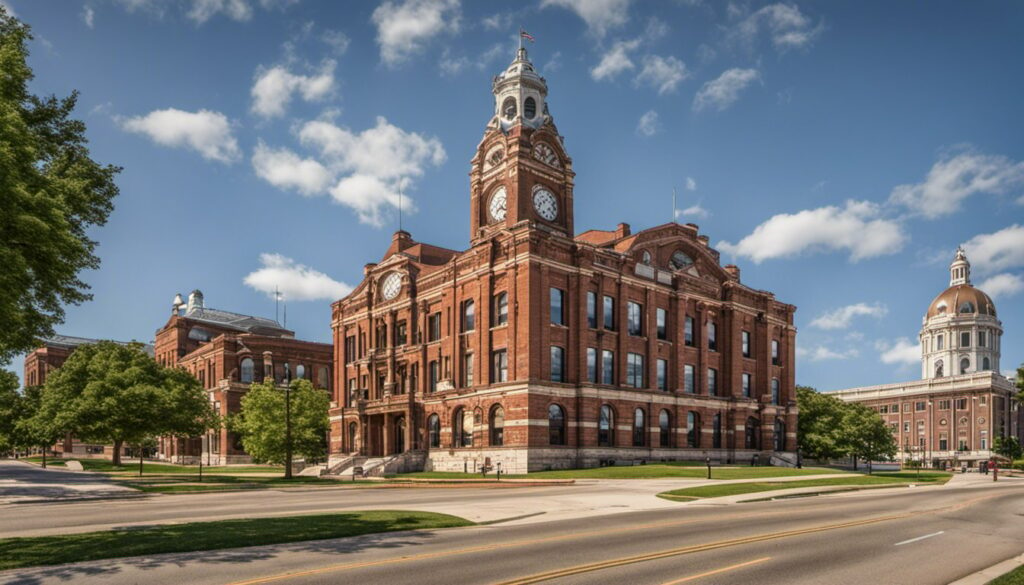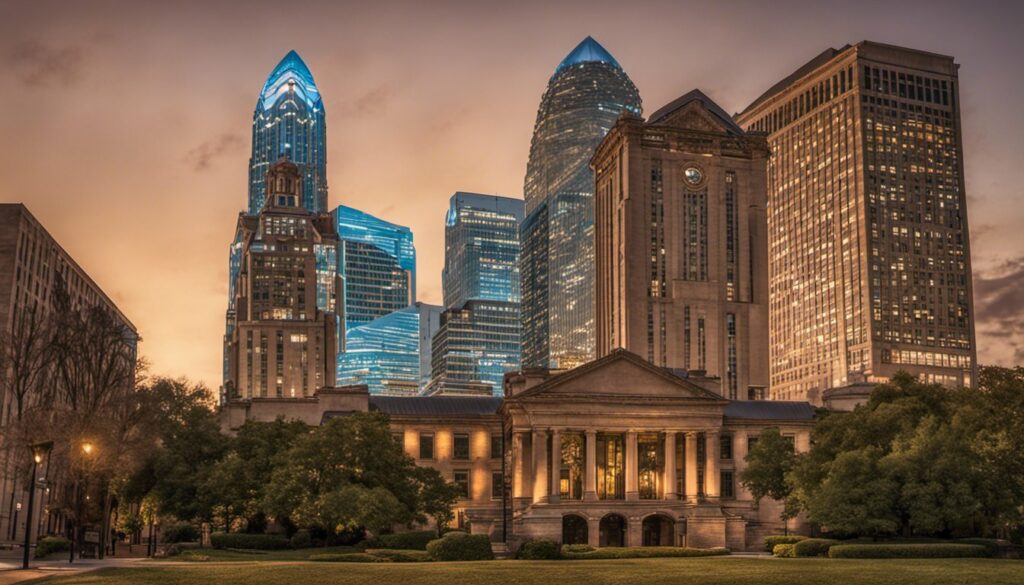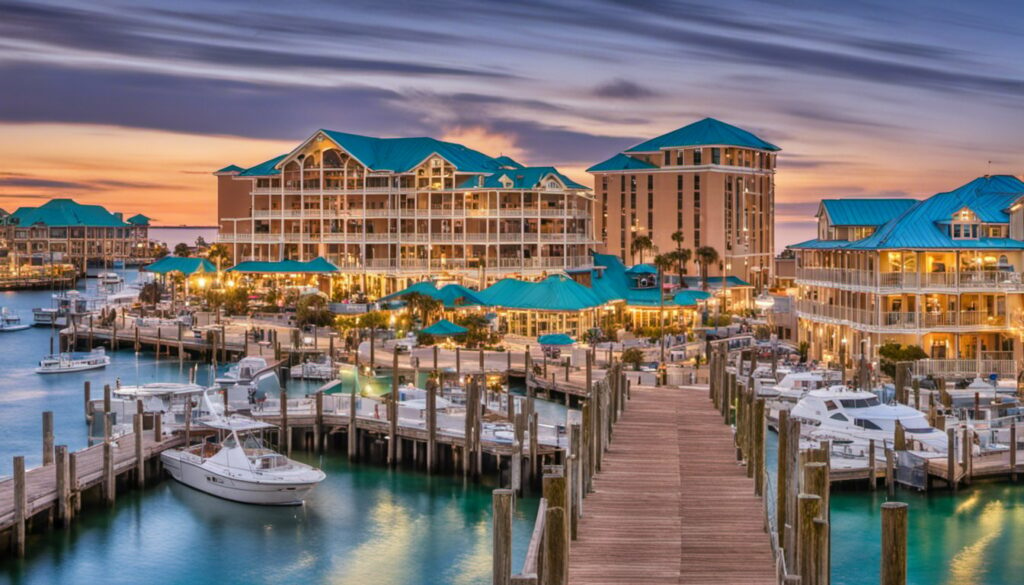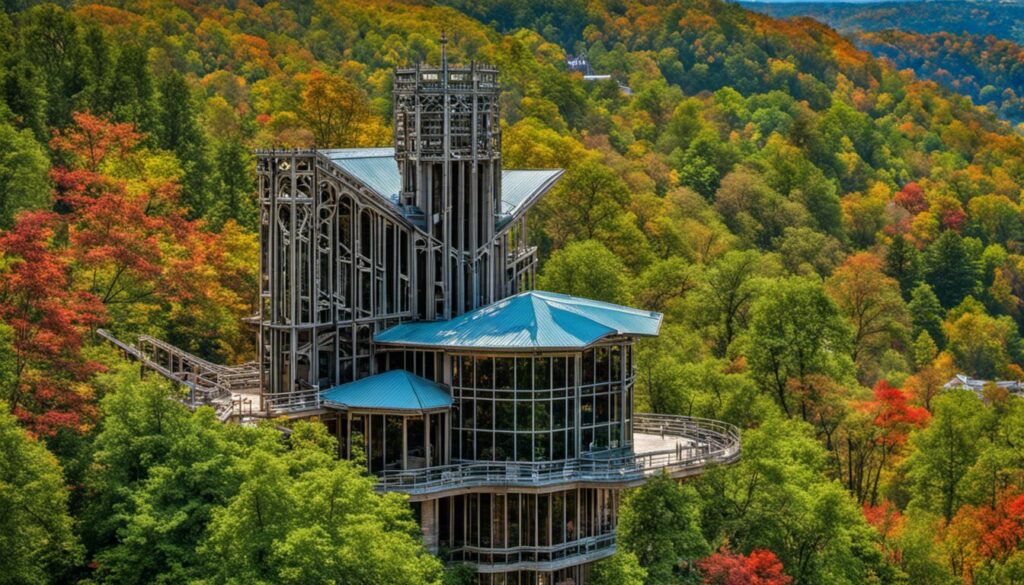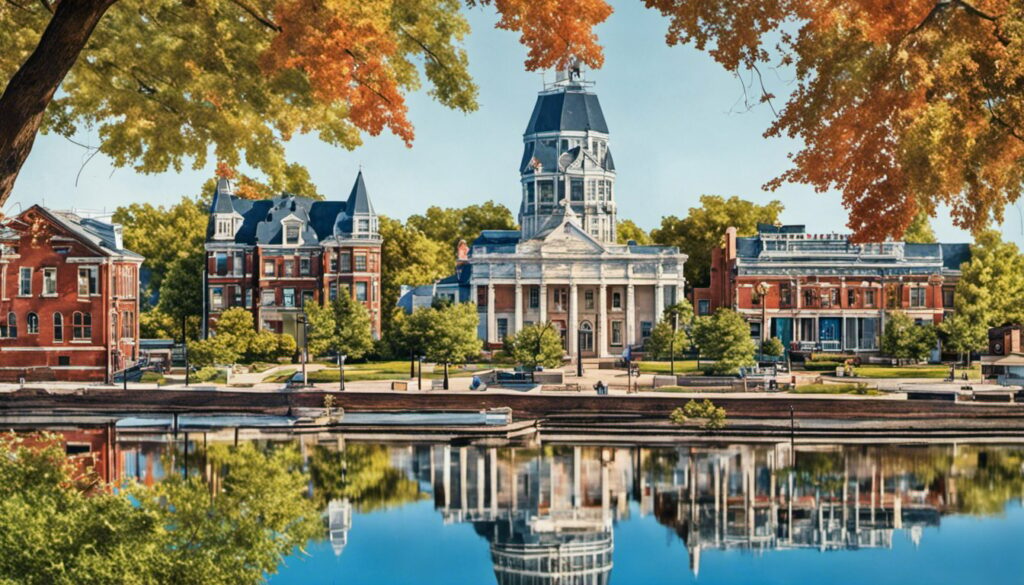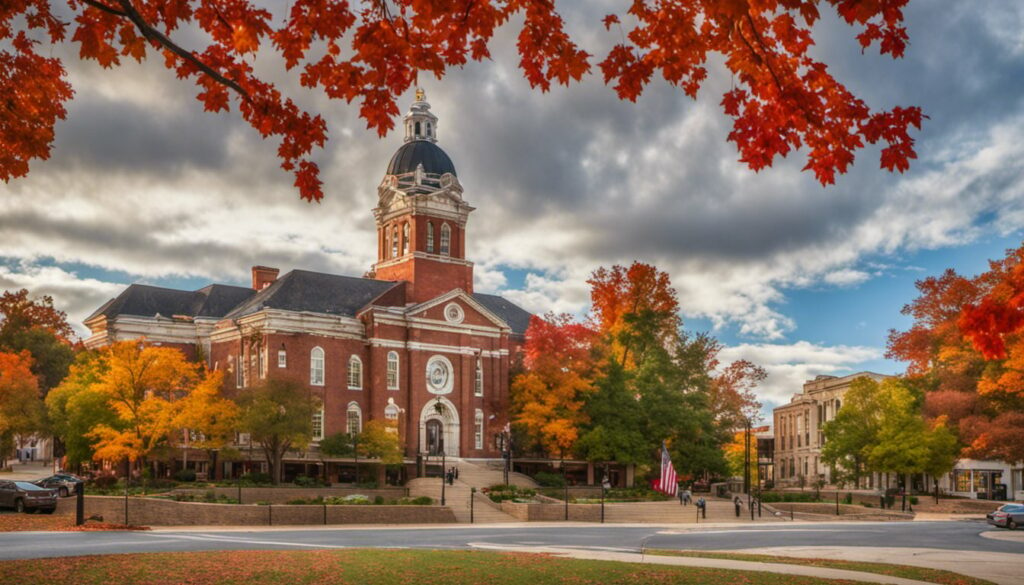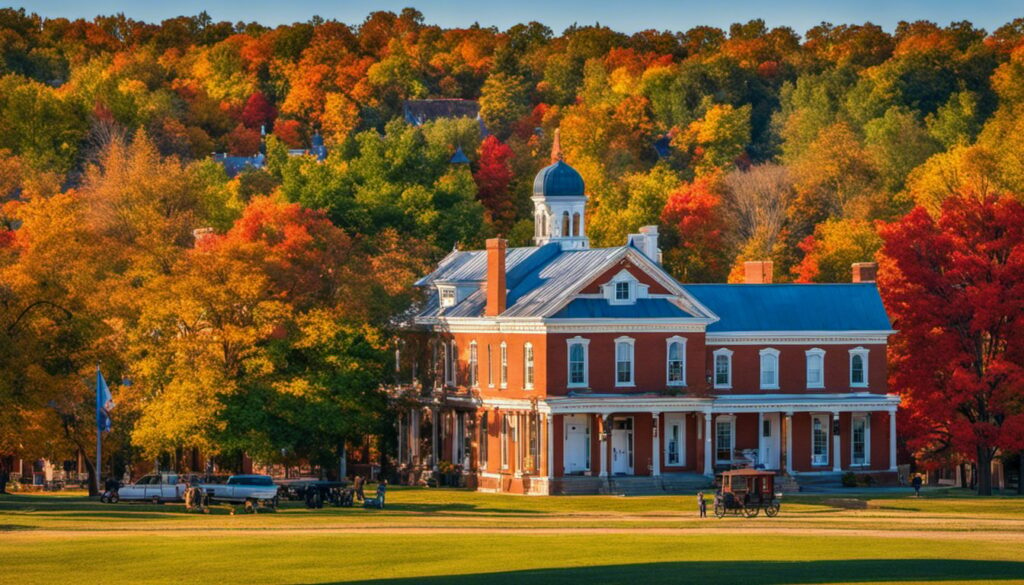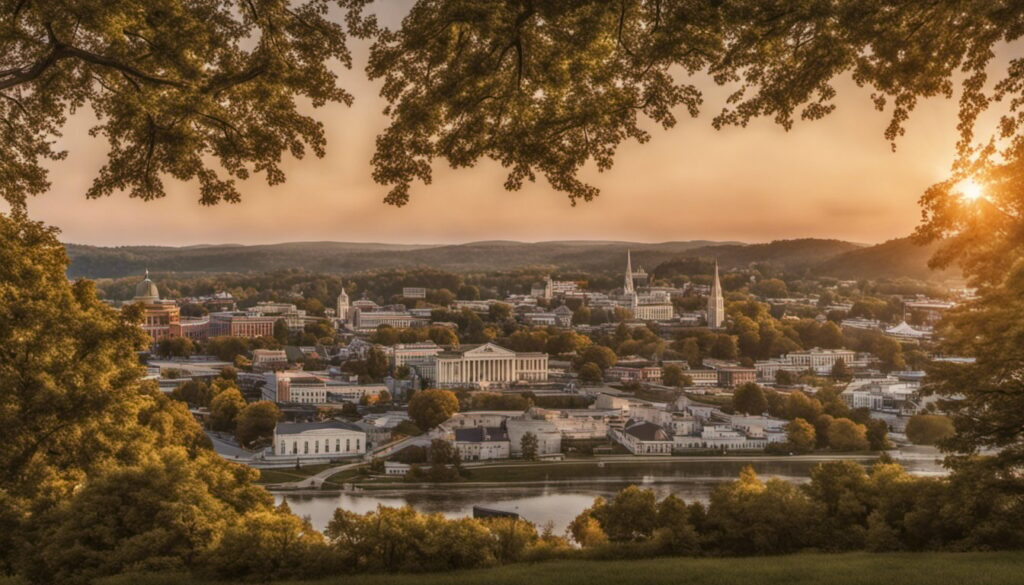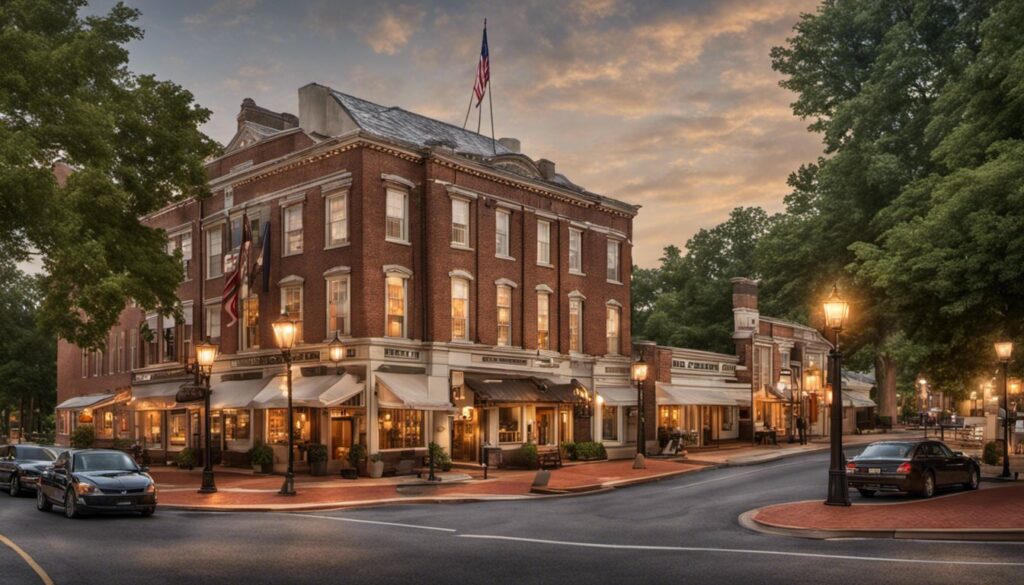Table Of Content
- Explore Knoxville’s Rich History: A Listicle of Famous Landmarks and Historical Sites
- Historical Overview of Knoxville
- Famous Landmarks in Downtown Knoxville
- Historical Homes and Buildings
- Knoxville’s Rich Cultural Heritage
- Historical Sites from the Civil War
- East Tennessee’s Natural Wonders
- The University of Tennessee’s Historic Landmarks
- Knoxville’s Industrial History
- Historical Tours in Knoxville
- Special Events and Festivals
- Knoxville’s Diverse Communities
- Frequently Asked Questions
Explore Knoxville’s Rich History: A Listicle of Famous Landmarks and Historical Sites
Are you planning a trip to Knoxville, Tennessee? If so, you’re in for a treat! Knoxville is a city rich in history and culture, with plenty of famous landmarks and historical sites to explore. Whether you’re a history buff, a nature lover, or just looking for a fun and educational experience, Knoxville has something for everyone.
As the third-largest city in Tennessee, Knoxville played a significant role in the state’s history. From its early days as a frontier settlement to its role in the Civil War and beyond, Knoxville has a fascinating story to tell. Today, visitors can explore a variety of historical sites and landmarks throughout the city, from downtown Knoxville to the surrounding countryside.
If you’re interested in history and culture, Knoxville is the perfect destination for you. With so many famous landmarks and historical sites to explore, you’re sure to have an unforgettable experience. So pack your bags, grab your camera, and get ready to explore all that Knoxville has to offer!
Historical Overview of Knoxville
If you’re a history buff, Knoxville, Tennessee, is the perfect place to visit. The city has a rich and fascinating history that dates back to the Revolutionary War era. James White, one of the city’s founders, built his home in 1786, and it still stands today as a testament to Knoxville’s early days.
During the Civil War, Knoxville played an important role as a center of transportation and communication. The city was also home to a strong pro-Union element during the secession crisis of the early 1860s, and remained bitterly divided throughout the war. Confederate forces occupied the city until September 1863, when Union forces entered the city unopposed.
Knoxville was the first capital of Tennessee, and the city is proud of its heritage and committed to preserving it. Many visitors come to Knoxville to learn more about Civil War sites in the area, and tour earthworks, battle sites, and historic homes.
What was once a rough frontier settlement became a grand state capital and evolved into the attractive city you see today. The Knoxville History Project is dedicated to preserving and promoting the city’s rich history, and they offer a wealth of information about the city’s past.
Famous Landmarks in Downtown Knoxville
If you’re visiting Knoxville, Tennessee, there are several famous landmarks in downtown that you should definitely check out. Here are some of the most exciting ones:
Market Square
Market Square is the heart of downtown Knoxville, and it’s a must-visit spot for anyone who loves shopping, dining, and people-watching. This bustling public square is surrounded by historic buildings and features a large open-air pavilion that hosts concerts, festivals, and other special events throughout the year.
At Market Square, you’ll find a wide variety of shops and restaurants, ranging from trendy boutiques and gourmet cafes to classic diners and dive bars. Whether you’re looking for a unique souvenir or a delicious meal, you’re sure to find something that catches your eye.
Sunsphere
The Sunsphere is one of the most iconic landmarks in Knoxville, and it’s definitely worth a visit if you’re in the area. This towering structure was built for the 1982 World’s Fair, and it’s now a popular tourist attraction that offers breathtaking views of the city and the surrounding mountains.
The Sunsphere stands 266 feet tall and features a 75-foot golden glass sphere at the top. Visitors can ride an elevator to the fourth level observation deck, where they can enjoy a 360-degree view of downtown Knoxville and the Great Smoky Mountains.
Old City
The Old City is a historic district in downtown Knoxville that’s known for its charming architecture, vibrant nightlife, and eclectic mix of shops and restaurants. This neighborhood was once a bustling commercial center, and many of its original buildings have been lovingly restored and preserved.
Today, the Old City is home to a diverse array of businesses, including art galleries, antique shops, music venues, and more. Whether you’re looking for a quiet spot to grab a cup of coffee or a lively bar to enjoy some live music, you’ll find plenty of options in this charming neighborhood.
These are just a few of the many famous landmarks in downtown Knoxville that you won’t want to miss. Whether you’re a history buff, a foodie, or an outdoor enthusiast, there’s something for everyone in this vibrant and exciting city.
Historical Homes and Buildings
Knoxville is home to several historical homes and buildings that offer a glimpse into the city’s rich past. Here are some of the must-visit sites:
Blount Mansion
Built-in 1792, the Blount Mansion is one of the oldest surviving buildings in Knoxville. It was the home of William Blount, a signer of the U.S. Constitution and the governor of the Southwest Territory. Today, the mansion is a National Historic Landmark and a museum that offers guided tours of the house and the surrounding gardens.
Ramsey House
The Ramsey House was built in 1797 by Knoxville’s first builder, Thomas Hope, for Francis Alexander Ramsey, a prominent statesman and one of the founders of Knoxville. The house is a prime example of Federal architecture and features original furniture and artwork. Guided tours are available, and the house is open to the public from Wednesday to Saturday.
Crescent Bend
Crescent Bend is a fine example of an 18th-century farm. The house was built in 1834 and was home to Drury Paine Armstrong, a wealthy landowner. The house features a beautiful Italianate garden that is spread across 2.5 acres. Guided tours are available, and the house is open to the public from Tuesday to Sunday.
Mabry-Hazen House
The Mabry-Hazen House was built-in 1858 and was the home of three generations of the same family. The house is a prime example of Victorian architecture and features original furniture and artwork. The house also has a collection of Civil War artifacts and memorabilia. Guided tours are available, and the house is open to the public from Wednesday to Sunday.
Westwood
Westwood is a beautiful Victorian mansion that was built-in 1890 by John Edwin Lutz, a prominent businessman. The house features original furniture and artwork and is a prime example of Victorian architecture. Guided tours are available, and the house is open to the public from Wednesday to Sunday.
In conclusion, Knoxville is home to several historical homes and buildings that offer a glimpse into the city’s rich past. Whether you’re interested in National Historic Landmarks, architectural buildings, or just want to learn more about the city’s history, these sites are definitely worth a visit.
Knoxville’s Rich Cultural Heritage
You are in for a treat if you are looking for a city with a rich cultural heritage. Knoxville, Tennessee, is a city that is proud of its history and committed to preserving it. The city is home to a wide range of museums, art galleries, and historic landmarks that showcase its cultural heritage.
The Knoxville Museum of Art is a must-visit for anyone interested in art and culture. The museum features a vast collection of art from the region and beyond. It is a great place to learn about the history of art in the area and see some of the most impressive pieces of art.
The East Tennessee Historical Society is another great destination for anyone interested in history and culture. The society’s museum features exhibits that showcase the history of the region, including its people, places, and events. The museum is a great place to learn about the area’s rich history and culture.
If you are interested in exploring the city’s history and heritage, you can visit several historic landmarks and sites. The Blount Mansion, James White’s Fort, and Ramsey House are just a few of the historic sites that you can visit to learn about the city’s past.
Finally, Knoxville is a city that is passionate about music and the arts. The city hosts several music festivals and events throughout the year that celebrate the area’s musical heritage. The Bijou Theatre, Tennessee Theatre, and the Civic Auditorium are just a few of the venues that showcase the city’s vibrant music scene.
In summary, Knoxville’s rich cultural heritage is a testament to the city’s commitment to preserving its history and promoting its arts and culture. Whether you are interested in art, history, or music, Knoxville has something to offer everyone.
Historical Sites from the Civil War
If you are a history buff, you will love exploring Knoxville’s Civil War sites. Knoxville played an important role in the Civil War, and there are several sites in the area that are worth visiting.
One of the most significant Civil War sites in Knoxville is Fort Dickerson. This fort was built by Union forces in 1863 and played a crucial role in the Battle of Fort Sanders. Today, you can visit the fort and explore the earthworks and trenches that were used during the battle.
Another must-visit site is the Confederate Memorial Hall. This museum is dedicated to preserving the history of the Confederate soldiers who fought in the Civil War. You can see artifacts from the war, including uniforms, weapons, and personal items belonging to soldiers.
If you want to learn more about the Battle of Knoxville, head to the East Tennessee History Center. This museum has a comprehensive exhibit on the battle, including artifacts and interactive displays. You can also take a guided tour of the battlefield to get a better understanding of the events that took place.
Finally, no visit to Knoxville’s Civil War sites would be complete without a trip to the Mabry-Hazen House. This historic home was used as a Union headquarters during the war and was the site of several skirmishes. Today, you can tour the house and see the bullet holes that still remain in the walls.
Overall, Knoxville’s Civil War sites offer a fascinating glimpse into the history of the American Civil War. Whether you are a history buff or just looking for something interesting to do, these sites are definitely worth a visit.
East Tennessee’s Natural Wonders
If you’re a nature lover, East Tennessee is the perfect place for you. With its stunning landscapes and awe-inspiring natural wonders, it’s no wonder that this region has become a popular destination for tourists from all over the world. From the majestic Great Smoky Mountains to the serene Tennessee River, there’s no shortage of natural beauty to explore.
One of the most popular natural wonders in East Tennessee is the Great Smoky Mountains. This majestic mountain range is home to some of the most breathtaking views in the country. Whether you’re hiking one of the many trails or simply taking in the scenery from a lookout point, you’re sure to be amazed by the beauty of this natural wonder.
If you’re looking for something a little more underground, the Cherokee Caverns are a must-see. These ancient caves are filled with stunning rock formations and underground streams, making them a unique and unforgettable natural wonder.
For those who prefer to stay above ground, the Ijams Nature Center is a great place to explore. With over 300 acres of preserved land, this nature center offers a variety of hiking trails, wildlife exhibits, and educational programs. It’s the perfect place to learn about East Tennessee’s natural wonders and get up close and personal with the local flora and fauna.
And of course, no visit to East Tennessee would be complete without a trip to the Tennessee River. This majestic river is the lifeblood of the region, and it’s a great place to enjoy a variety of outdoor activities, including fishing, kayaking, and boating.
Whether you’re a seasoned nature lover or simply looking to escape the hustle and bustle of the city, East Tennessee’s natural wonders are sure to leave you feeling refreshed and rejuvenated. So pack your bags, grab your camera, and get ready to explore the beauty of this incredible region.
The University of Tennessee’s Historic Landmarks
If you’re a history buff, you’ll love exploring the University of Tennessee’s historic landmarks. From iconic buildings to famous sports stadiums, the University of Tennessee has a rich history that’s waiting to be discovered. Here are three must-visit landmarks on campus:
Ayres Hall
Ayres Hall is one of the most recognizable buildings on the University of Tennessee campus. Built in 1921, this iconic structure is a testament to the university’s commitment to academic excellence. The building houses the College of Arts and Sciences, and it’s home to some of the university’s most important departments, including English, history, and mathematics.
Neyland Stadium
If you’re a sports fan, you won’t want to miss Neyland Stadium. Named after legendary football coach Robert Neyland, this stadium is the home of the Tennessee Volunteers football team. With a seating capacity of over 102,000, Neyland Stadium is one of the largest college football stadiums in the country. It’s also one of the loudest, thanks to the passionate fans who fill the stands on game day.
Baumann Brothers
Baumann Brothers was one of the first buildings constructed on the University of Tennessee campus. Built in 1828, this historic structure was originally home to Blount College, which later became the University of Tennessee. Today, Baumann Brothers is home to the university’s Office of Undergraduate Admissions. If you’re interested in learning more about the university’s history, this is a great place to start.
Whether you’re a student, a history buff, or just a curious visitor, the University of Tennessee’s historic landmarks are a must-see. From Ayres Hall to Neyland Stadium to Baumann Brothers, these landmarks offer a glimpse into the rich history of this iconic institution.
Knoxville’s Industrial History
Knoxville has a rich industrial history that has played a significant role in shaping the region. From the railroad to the marble industry, the city has seen various industries flourish and contribute to its growth.
The railroad played a crucial role in the development of Knoxville’s industrial history. The city was a hub for the East Tennessee, Virginia, and Georgia Railroad, which transported goods and people across the region. The railroad brought in raw materials and provided a means of transportation for finished goods, making it a vital component of the city’s economy.
The marble industry was another significant contributor to Knoxville’s industrial growth. The city was known as the “Marble City” due to the abundance of Tennessee marble that was quarried in the area. The marble was used in various buildings and monuments across the country, including the Lincoln Memorial in Washington, D.C. The industry provided jobs for many people in the area and helped put Knoxville on the map.
The lumber and coal industries were also crucial to Knoxville’s industrial history. The city was surrounded by forests, and the lumber industry provided a means of income for many people in the region. Coal mining was also prevalent in the area, with many mines located in the nearby mountains. The coal was used in various industries, including steel production, and helped fuel the city’s growth.
Overall, Knoxville’s industrial history is a testament to the city’s resilience and ingenuity. From the railroad to the marble industry, the city has seen various industries flourish and contribute to its growth. Whether you are interested in the history of the railroad, the marble industry, or the city’s lumber and coal industries, Knoxville has a rich history that is worth exploring.
Historical Tours in Knoxville
If you’re a history buff, Knoxville has plenty of historical tours and attractions to keep you entertained. Whether you’re interested in early settlers, the Civil War, or the city’s industrial past, there’s something for everyone. Here are a few historical tours and attractions you won’t want to miss:
Guided Tours
If you want to learn more about Knoxville’s history, a guided tour is a great way to do it. The Knoxville History Project offers a variety of guided tours, including walking tours of downtown Knoxville and tours of historic cemeteries. The East Tennessee Historical Society also offers guided tours of historic homes and buildings in the area.
History Museums
Knoxville is home to several history museums, including the East Tennessee History Center and the Museum of East Tennessee History. These museums offer exhibits and artifacts related to the region’s history, including the Civil War, early settlers, and the city’s industrial past.
National Park Service
The Great Smoky Mountains National Park is just a short drive from Knoxville and offers a wealth of history and natural beauty. The park is home to several historic sites, including the Cades Cove Historic District, which features 19th-century homes and churches, and the Elkmont Historic District, which was once a popular vacation spot for wealthy families.
Whether you’re interested in guided tours, history museums, or national parks, Knoxville has something for everyone. So grab your walking shoes and get ready to explore the city’s rich history!
Special Events and Festivals
Knoxville, Tennessee, is a city that is always buzzing with excitement and energy. The city hosts numerous special events and festivals throughout the year that you don’t want to miss. Here are some of the most popular events that you should definitely check out:
- Knoxville World’s Fair: The 1982 World’s Fair was held in Knoxville, and it was a massive success. The fair attracted more than 11 million visitors from all over the world. Today, you can still see some of the iconic structures that were built for the fair, such as the Sunsphere, which offers stunning views of the city.
- Dogwood Arts Festival: The Dogwood Arts Festival is a month-long celebration of the arts that takes place every spring. The festival features a wide range of events, including art shows, music performances, and culinary events. The highlight of the festival is the Dogwood Arts Parade, which features elaborate floats and marching bands.
- Tennessee Valley Fair: The Tennessee Valley Fair is one of the largest fairs in the state, and it takes place every September. The fair features a wide range of activities, including carnival rides, live music, and agricultural exhibits. The fair also has a wide range of food vendors, so you can try all sorts of delicious treats.
- Boomsday Festival: Boomsday Festival is an annual fireworks show that takes place on Labor Day weekend. The festival attracts thousands of visitors to downtown Knoxville, and it features live music, food vendors, and of course, a spectacular fireworks display.
- Christmas in the City: Christmas in the City is a month-long celebration of the holiday season that takes place every December. The festival features a wide range of activities, including ice skating, carriage rides, and visits with Santa Claus. The highlight of the festival is the Christmas Parade, which features elaborate floats and marching bands.
Whether you’re a local or a visitor, Knoxville’s special events and festivals are sure to leave you feeling excited and energized. Make sure to mark your calendar for these must-see events!
Knoxville’s Diverse Communities
Knoxville is a city that prides itself on its diversity. The city is home to a variety of communities, each with its own unique history and culture. From the Cherokee Nation to African American communities, Knoxville has a rich and diverse history.
East Tennessee is home to some of the most beautiful landscapes in the country. The Great Smoky Mountains National Park is just a short drive away, and the region is known for its rich history and culture. Middle Tennessee is also home to a number of historic sites and landmarks, including the Hermitage, the home of President Andrew Jackson.
East Knoxville is a vibrant community that is home to a number of historic landmarks and sites. The Beck Cultural Exchange Center is a museum that celebrates the history and culture of African Americans in Knoxville. The center features exhibits on black history, art, and culture, and hosts a number of events throughout the year.
The Cherokee Nation has a long and rich history in East Tennessee. The Cherokee Heritage Center is a museum that celebrates the history and culture of the Cherokee people. The museum features exhibits on Cherokee history, art, and culture, and hosts a number of events throughout the year.
Native Americans have a long and rich history in Knoxville. The Museum of the Cherokee Indian is a museum that celebrates the history and culture of the Cherokee people. The museum features exhibits on Cherokee history, art, and culture, and hosts a number of events throughout the year.
Black history is an important part of Knoxville’s history. The Alex Haley Statue is a monument that honors the author of “Roots,” a book that tells the story of African American history. The statue is located in Morningside Park and is a popular spot for visitors.
Knoxville is a city that celebrates its diversity and history. Whether you are interested in Native American history, African American culture, or the history of East Tennessee, Knoxville has something to offer.
Frequently Asked Questions
What is the history of Blount Mansion?
Blount Mansion is a historic site that was built in 1792 by William Blount, who was a signer of the United States Constitution and the first governor of the state of Tennessee. The mansion served as the capital of the Southwest Territory and played a significant role in the early history of Knoxville. Today, visitors can take a guided tour of the mansion and learn about its history and significance.
What can you see at the Knoxville Sunsphere?
The Knoxville Sunsphere is a famous landmark in Knoxville that was built for the 1982 World’s Fair. Visitors can take an elevator to the observation deck on the fourth level and enjoy panoramic views of the city. The Sunsphere also houses a restaurant on the second level, and visitors can take a self-guided tour of the history of the World’s Fair on the third level.
What is the significance of the Historic Ramsey House?
The Historic Ramsey House is a historic site that was built in 1797 by Francis Alexander Ramsey, who was a prominent figure in the early history of Knoxville. The house is significant because it is one of the few remaining Federal-style homes in the area. Visitors can take a guided tour of the house and learn about its history and the life of the Ramsey family.
What are some notable Knoxville museums?
Knoxville is home to several notable museums, including the Knoxville Museum of Art, the East Tennessee History Center, and the McClung Museum of Natural History and Culture. The Knoxville Museum of Art features a collection of contemporary art, while the East Tennessee History Center focuses on the history of the region. The McClung Museum features exhibits on natural history, anthropology, and archaeology.
What is the story behind The Fort Knoxville?
The Fort Knoxville is a historic site that was built in 1863 during the Civil War. The fort was built to protect the city of Knoxville from Confederate forces, and it played a significant role in the Battle of Fort Sanders. Today, visitors can take a self-guided tour of the fort and learn about its history and significance.
Which historic homes can be found in Knoxville, TN?
Knoxville is home to several historic homes, including the Blount Mansion, the Historic Ramsey House, and the Mabry-Hazen House. The Mabry-Hazen House is a Civil War-era home that features original furnishings and artifacts, while the Blount Mansion and the Historic Ramsey House are both Federal-style homes that offer guided tours and educational programs.

